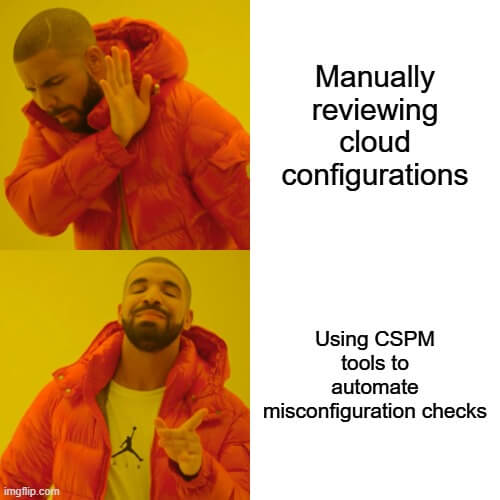Cloud computing is integral part of modern business operations. From startups to global enterprises, organizations rely on the cloud to store data, run applications, and ensure seamless connectivity. However, as businesses increasingly adopt cloud solutions, the risks associated with data breaches, cyberattacks, and compliance violations continue to grow. This is where advanced cloud security strategies come into play.
In this guide, we delve into the next generation of cloud security—Cloud Security 2.0—and explore advanced strategies for safeguarding your data in an ever-evolving threat landscape.
The Importance of Cloud Security in Modern Businesses
The cloud offers unparalleled flexibility, scalability, and efficiency. However, these advantages come with a significant caveat: the need for robust security measures. According to a recent report by Cybersecurity Ventures, cybercrime costs are predicted to reach $10.5 trillion annually by 2025. A substantial portion of these costs stems from vulnerabilities in cloud environments.
Modern businesses rely on cloud security to:
Protect Sensitive Data: Safeguard critical business and customer data from unauthorized access.
Ensure Compliance: Adhere to regulatory frameworks such as GDPR, HIPAA, and PCI DSS.
Maintain Business Continuity: Prevent downtime and data loss during cyber incidents.
Foster Customer Trust: Build a reputation for reliability and security.
Key Challenges in Cloud Security
Before implementing advanced strategies, it’s essential to understand the challenges that modern businesses face in securing their cloud environments:
Complexity of Multi-Cloud Environments: Many businesses use multiple cloud service providers, making it difficult to maintain consistent security policies.
Lack of Visibility: Limited transparency into cloud activities can lead to undetected vulnerabilities.
Misconfigurations: Errors in setting up cloud resources are a leading cause of data breaches.
Evolving Threats: Cybercriminals are constantly developing sophisticated attack methods.
Advanced Strategies for Safeguarding Data in the Cloud
To address these challenges, businesses must adopt advanced cloud security strategies that go beyond traditional measures. Here are some of the most effective approaches:
1. Zero Trust Architecture
The Zero Trust model operates on the principle of “never trust, always verify.” In this approach:
Continuous Authentication: Users and devices must continuously verify their identities to access cloud resources.
Least Privilege Access: Access permissions are granted only to the extent necessary for a specific task.
Micro-Segmentation: Network segmentation limits the lateral movement of attackers within the cloud.
2. Encryption at All Levels
Encryption ensures that even if data is intercepted, it remains unreadable to unauthorized parties. Best practices include:
Data-at-Rest Encryption: Encrypt stored data using robust algorithms like AES-256.
Data-in-Transit Encryption: Use secure communication protocols like TLS to protect data in transit.
Key Management: Implement secure key management systems (KMS) to control encryption keys.
3. Cloud Security Posture Management (CSPM)
CSPM tools help organizations identify and mitigate misconfigurations in their cloud environments. Features include:
Automated Compliance Checks: Ensure alignment with regulatory standards.
Threat Detection: Identify vulnerabilities and unusual activities in real-time.
Remediation Recommendations: Provide actionable steps to resolve security gaps.

4. Secure Access Service Edge (SASE)
SASE combines network security and wide-area networking (WAN) capabilities into a single framework. Benefits include:
Unified Security: Protects data across cloud, on-premises, and edge environments.
Improved Performance: Optimizes data flow while maintaining robust security.
Scalability: Adapts to the growing needs of businesses.
5. Artificial Intelligence and Machine Learning
AI and ML technologies enhance cloud security by automating threat detection and response. Applications include:
Behavioral Analytics: Detect anomalies in user behavior.
Predictive Threat Modeling: Identify potential vulnerabilities before they are exploited.
Automated Incident Response: Respond to threats in real-time without human intervention.
6. Regular Security Audits and Penetration Testing
Routine audits and penetration testing are crucial for identifying vulnerabilities. Best practices include:
Red Teaming: Simulate real-world attacks to test your defenses.
Audit Cloud Configurations: Ensure that all cloud resources are securely configured.
Compliance Reviews: Verify adherence to industry regulations and standards.
7. Cloud Access Security Broker (CASB)
CASB solutions act as intermediaries between users and cloud services, providing visibility and control over cloud usage. Features include:
Data Loss Prevention (DLP): Prevent unauthorized sharing of sensitive data.
Access Controls: Restrict access based on user roles and context.
Activity Monitoring: Track user activities to detect unusual behavior.
8. Incident Response Planning
An effective incident response plan minimizes the impact of security breaches. Key elements include:
Preparation: Define roles, responsibilities, and protocols.
Detection: Use monitoring tools to identify incidents quickly.
Response: Contain and mitigate the threat.
Recovery: Restore affected systems and data.
9. Continuous Employee Training
Human error remains a leading cause of security breaches. Regular training programs should:
Educate employees on phishing and social engineering threats.
Promote best practices for password management.
Emphasize the importance of reporting suspicious activities.
10. Backup and Disaster Recovery
Ensure that your business can recover from data loss or downtime with:
Regular Backups: Schedule automatic backups of critical data.
Disaster Recovery Plans (DRP): Develop and test recovery plans for various scenarios.
Redundant Systems: Use redundant infrastructure to minimize downtime.
Emerging Trends in Cloud Security
As technology evolves, so do the methods for securing cloud environments. Key trends to watch include:
Quantum-Resistant Encryption: Preparing for the potential impact of quantum computing on encryption algorithms.
Serverless Security: Addressing security concerns in serverless architectures.
Privacy-Enhancing Technologies (PETs): Implementing solutions that ensure data privacy and compliance.
Conclusion
Cloud security is no longer just a technical necessity; it is a strategic imperative for modern businesses. By adopting advanced strategies such as Zero Trust Architecture, AI-driven threat detection, and robust encryption practices, organizations can protect their data and maintain customer trust in an increasingly complex digital landscape.
Investing in Cloud Security 2.0 not only safeguards sensitive information but also enables businesses to innovate and grow with confidence. In the face of rising cyber threats, proactive security measures are the cornerstone of sustainable success.
Why Businesses Trust SecureMyOrg for Comprehensive Network Security
At SecureMyOrg, we uncover and fix all possible security vulnerabilities of mobile and web, while providing solutions to mitigate risks. We are trusted by renowned companies like Yahoo, Gojek and Rippling, and with 100% client satisfaction, you’re in safe hands!







Some of the things people reach out to us for –
- Building their cybersecurity program from scratch – setting up cloud security using cost-effective tools, SIEM for alert monitoring, building policies for the company
- Vulnerability Assessment and Penetration Testing ( VAPT ) – We have certified professionals, with certifications like OSCP, CREST – CPSA & CRT, CKA and CKS
- DevSecOps consulting
- Red Teaming activity
- Regular security audits, before product release
- Full time security engineers.
